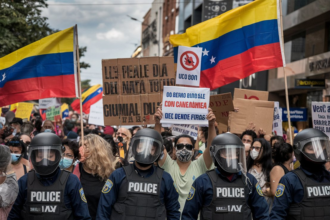An archaeological dig has unearthed a remarkable Mayan metropolis under the Campeche state’s thick forest cover in southeast Mexico. Second in size only to the well-known site of Calakmul, this secret city, known as “Valeriana,” unveils a fresh chapter of Mayan civilization and its remarkable cultural legacy. Researchers discovered this surprising result using Lidar technology, which maps hidden structures by transmitting laser pulses that detect items under dense vegetation.
- Was This "City Hidden in Plain Sight"?
- What Did the Urban Network of Valeriana Reveal?
- Why Did the Mayan Civilization Collapse, and What Led to Valeriana's Abandonment?
- How Has Lidar Transformed the Discovery of Lost Civilizations?
- What Does the Discovery of Valeriana Mean for Our Understanding of the Maya?
Was This "City Hidden in Plain Sight"?
A PhD student in online research came across a radar survey for environmental monitoring and made a somewhat unexpected discovery about Valeriana. “I was on page 16 of Google search and found a radar survey done by a Mexican organisation for environmental monitoring,” he stated, relating his data discovery.
Using Lidar (Light Detection and Ranging), a method that has revolutionised archaeological study by allowing quick mapping of rich tropical environments, the radar surveys Thousands of laser pulses per second from Lidar to create a detailed map based on the time it takes the pulses to return, therefore exposing objects otherwise undetectable.
Processing the survey data, the researchers discovered what many had missed: a vast ancient city spanning nearly 16.6 square kilometres—about the same area as Edinburgh, Scotland. Based on the evidence, the city—now Valeriana after a nearby lagoon—may have housed as many as 30,000 to 50,000 people from roughly 750 to 850 AD, a population more significant than the present area.
What Did the Urban Network of Valeriana Reveal?
Further exploring the Lidar data, the team discovered an extensive network of plazas, temple-pyramids, and ancient infrastructure. Surrounded by affluent residential neighbourhoods and connected by causeways or raised paths, they found two main urban centres with significant buildings spaced around two km apart. Two big plazas, ceremonial pyramids, jade burial treasures, and an old ballgame court were part of the city design—indicating that Valeriana was a busy metropolis with a rich public and religious life.
“It has all the characteristics of a capital city,” stated a co-author of the study and archaeologist. “Calakmul has second only density of buildings; Valeriana was a centre of social and political activity.”
The researchers also found evidence of a reservoir, meaning that the locals used the natural resources of their surroundings to sustain their population—a necessary ability in the tropics, where maintaining water supplies for thousands of people was no minor task.
Why Did the Mayan Civilization Collapse, and What Led to Valeriana's Abandonment?
The ancient Maya lived in the area for millennia, but many prominent city-states collapsed dramatically in 800 AD. The causes of this autumn have been discussed for a long time; Valeriana’s finding adds to the current argument.
“Climate change most certainly had a big part in the city’s ultimate abandonment,” one researcher said. “The population density was probably unsustainable as drought conditions intensified, and without enough flexibility to adapt, entire systems started to unravel as people moved further away.”
The experts believe that conflict and the Spanish conquest of the 16th century most certainly destabilised the region and helped several Mayan city-states vanish entirely.
Another specialist, who was not involved in the study, feels that the results at Valeriana confirm that the Mayans lived in complex urban environments. “The area is populated—that is, it was occupied in the past—and not, as it looks to the naked eye, uninhabited or “wild,” she underlined, questioning accepted wisdom regarding ancient civilisations in tropical settings.
How Has Lidar Transformed the Discovery of Lost Civilizations?
This find emphasises how revolutionary Lidar is in changing archaeological methods, particularly in highly forested regions like the Mesoamerican tropics. In just a decade, Lidar has mapped the area ten times, accelerating exploration compared to past labour-intensive studies on foot.
“Lidar has opened a world of lost civilisations we never would have imagined we would discover,” he said. “In my early employment years, covering a little region might take months. But we have mapped as much as we did in a century in the past ten years.
Still, the technology has given archaeologists a fascinating conundrum. “We have found so many sites that it is impossible to dig them all,” he said. “One of the downsides of discovering many new Maya cities in the era of Lidar is that there are more of them than we can ever hope to study.”
Though close—just a 15-minute walk from a prominent road near Xhipul—the historic city of Valeriana is still primarily unvisited. “I have to eventually head to Valeriana,” he said. “It’s really near to the road; how could you not? I cannot say, nevertheless, that we would undertake a project there.”
What Does the Discovery of Valeriana Mean for Our Understanding of the Maya?
Finding Valeriana changes our knowledge of ancient Maya civilization and refutes persistent beliefs that the tropics are hostile to sophisticated societies. This discovery questions the Western assumption that “civilisations went to die in the tropics.” Instead, Valeriana reveals that these areas were the site of wealthy and sophisticated civilisations, flexible and creative in ways we are only starting to understand, ” said an archaeologist.
The Valeriana survey and two other neighbouring sites revealed 6,764 buildings representing a dense and orderly society with monumental architecture, public spaces, and residential areas. The find illustrates the vast, linked network of Mayan civilisation that formerly controlled Central America.
The research results, published in the scholarly journal Antiquity, provide a window into a dynamic civilisation that previously thrived in balance with the demanding terrain of the Mesoamerican rainforest.








